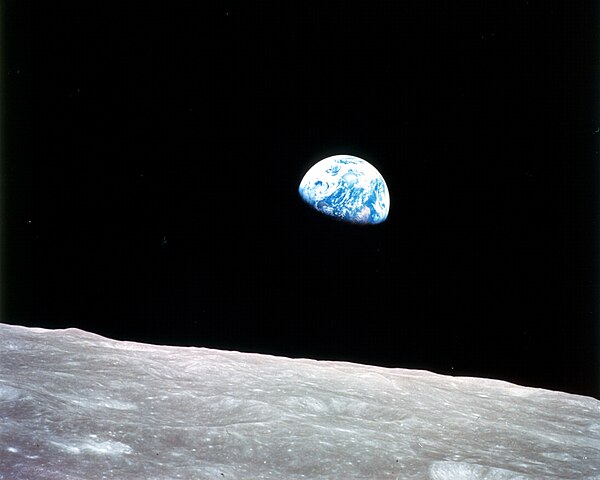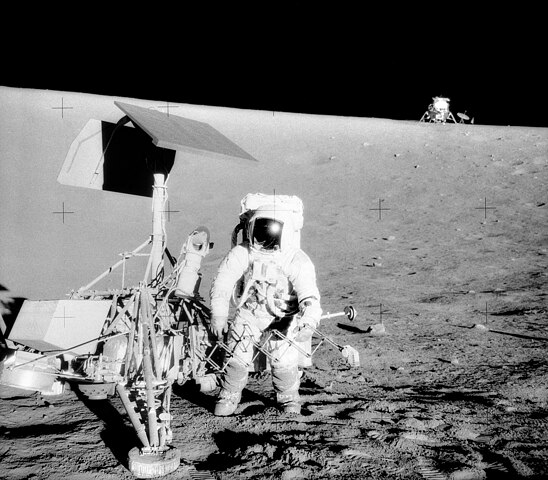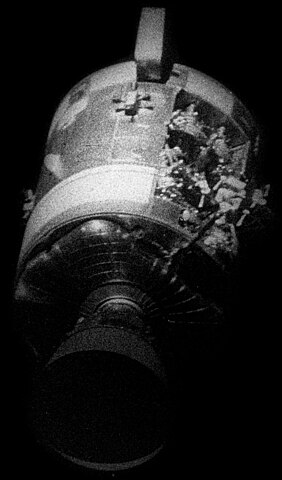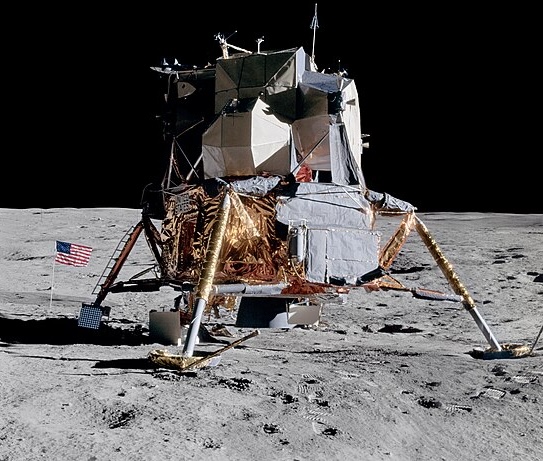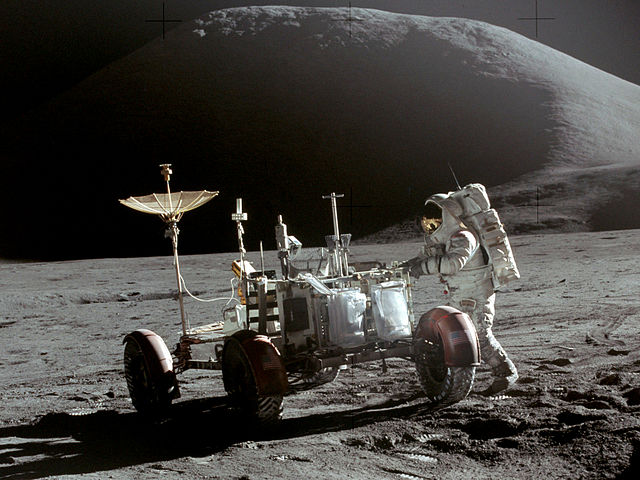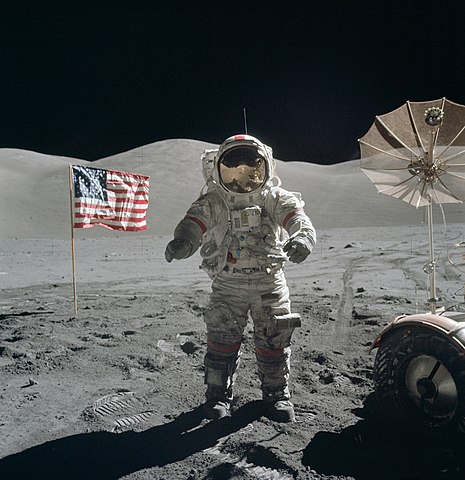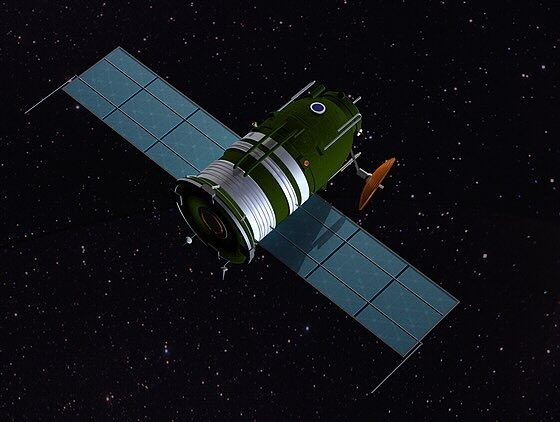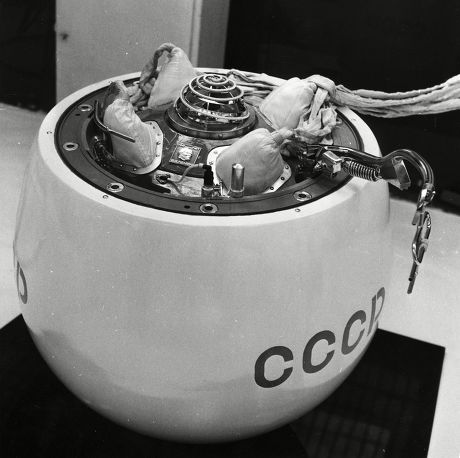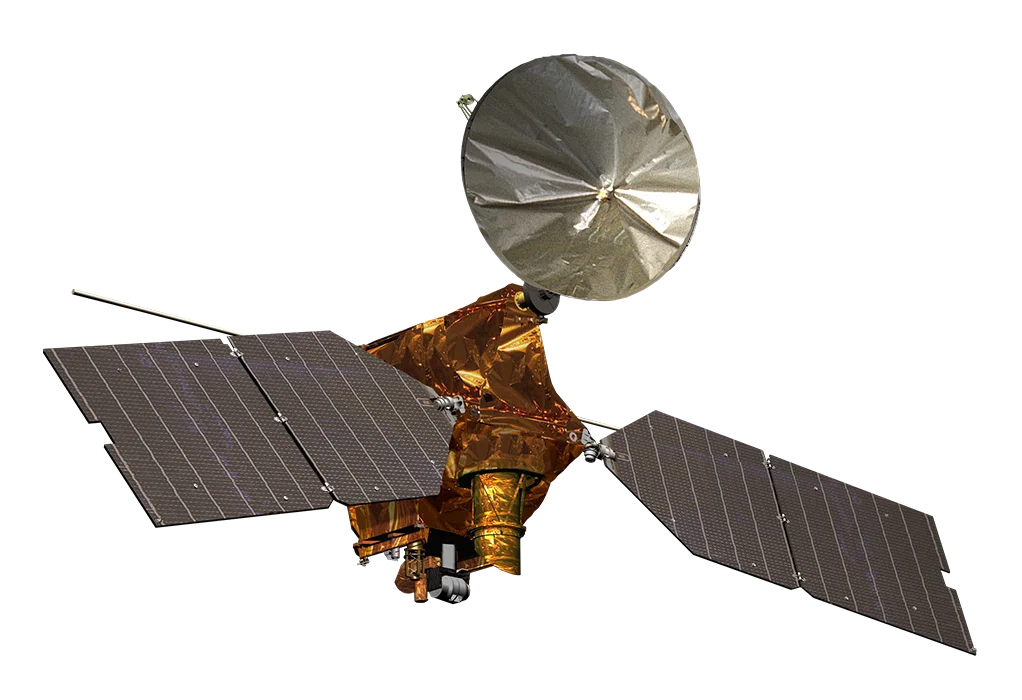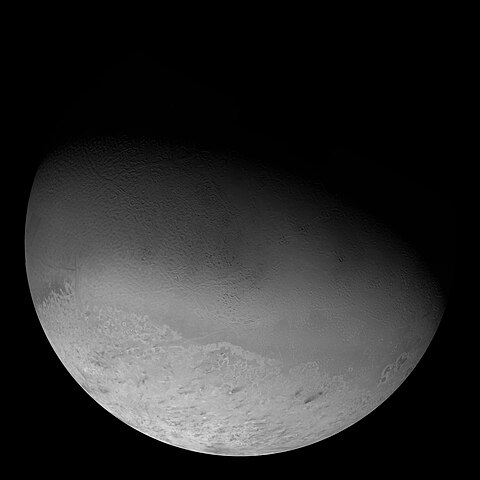1 day / second
0.5 AU
Apollo 11
Spacecraft
The Apollo 11 spacecraft, launched in July 1969, carried astronauts Neil Armstrong, Buzz Aldrin, and Michael Collins on humanity's first successful mission to land and walk on the Moon.
Key Facts
organization | NASA |
orbital regime | Inner System |
learn more | Wikipedia |
crew | Neil Armstrong, Buzz Aldrin, Michael Collins |
launched | 1969-07-16 |
returned | 1969-07-24 |
launch mass | 49,735 kg |
Mission Timeline
Launched
July 16, 1969 at 13:32 UTC
Luna (The Moon)
Lander
Apollo 11 became the first manned spacecraft to land on the Moon on July 20, 1969, when Neil Armstrong and Buzz Aldrin landed on Mare Tranquillitatis for their historic 21-hour stay.
Returned
July 24, 1969 at 16:50 UTC
Apollo 11 splashed down in the Pacific Ocean southwest of Hawaii, successfully concluding humanity's first crewed mission to land on and return from the Moon.
Related Spacecraft
Apollo 8
Launched in 1968
Crewed by Frank Borman, James Lovell, William Anders
The first crewed mission to orbit the Moon, launched on December 21, 1968, with astronauts Frank Borman, James Lovell, and William Anders completing 10 lunar orbits and capturing the iconic "Earthrise" photograph before returning safely to Earth.
Apollo 10
Launched in 1969
Crewed by Thomas Stafford, Gene Cernan, John Young
The Apollo 10 mission, launched in May 1969, served as a full dress rehearsal for the Moon landing, with astronauts flying the Lunar Module to within 8.4 nautical miles of the lunar surface before returning safely to Earth.
Apollo 12
Launched in 1969
Crewed by Pete Conrad, Alan Bean, Richard Gordon
The second crewed mission to land on the Moon, launched on November 14, 1969, successfully landed astronauts Pete Conrad and Alan Bean near Surveyor 3 in Oceanus Procellarum for a 31.5-hour lunar surface stay.
Apollo 13
Launched in 1970
Crewed by Jim Lovell, Jack Swigert, Fred Haise
A lunar mission launched in 1970 that suffered a near-catastrophic oxygen tank explosion en route to the Moon, forcing the crew to abort their landing and return safely to Earth after a harrowing journey around the lunar far side.
Apollo 14
Launched in 1971
Crewed by Alan Shepard, Stuart Roosa, Edgar Mitchell
The third crewed mission to land on the Moon launched on January 31, 1971, with astronauts Alan Shepard and Edgar Mitchell spending 33.5 hours on the Fra Mauro highlands and conducting extensive scientific experiments despite communication problems during their lunar descent.
Apollo 15
Launched in 1971
Crewed by David Scott, Alfred Worden, James Irwin
Apollo 15 landed astronauts David Scott and James Irwin on the Moon's Hadley-Apennine region in July 1971, where they conducted three EVAs, deployed scientific instruments, and became the first mission to use the Lunar Roving Vehicle.
Apollo 16
Launched in 1972
Crewed by John Young, Ken Mattingly, Charlie Duke
Launched in April 1972, Apollo 16 carried astronauts John Young and Charles Duke to the Moon's Descartes Highlands where they conducted three EVAs, collected 95.8 kg of lunar samples, and set a lunar land speed record of 17.1 km/h in their rover.
Apollo 17
Launched in 1972
Crewed by Gene Cernan, Ronald Evans, Jack Schmitt
The final mission in the Apollo program, launched on December 7, 1972, carried astronauts Eugene Cernan, Harrison Schmitt, and Ronald Evans to the Moon, where Cernan and Schmitt conducted three EVAs totaling 22 hours in the Taurus-Littrow valley while Evans orbited above.


